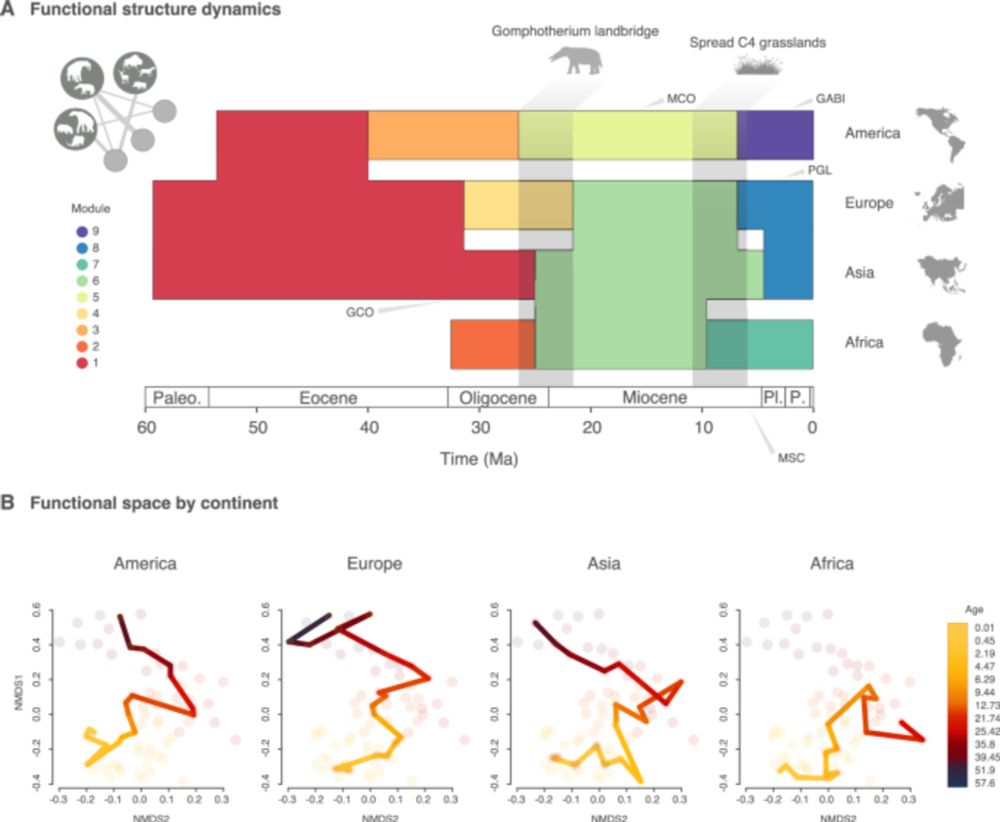
#EBDSeminars Join us to explore ecosystem resilience through mammal communities spanning millions of years!
🔹Connecting the past: how ecological networks reveal the dynamics of ancient ecosystems
🔸 @fernandoblancos.bsky.social
📅6th November, 13:00h CET
Live: www.youtube.com/watch?v=vhu_...
04.11.2025 13:18 — 👍 9 🔁 4 💬 0 📌 0

🦴 The Doñana National Park serves as a natural laboratory for investigating fossilization processes in a Mediterranean climate.
Published in PLOS ONE, a new study offers a new perspective on bone weathering.
🔗 www.ebd.csic.es/en/outreach/...
📄 journals.plos.org/plosone/arti...
05.11.2025 10:28 — 👍 8 🔁 4 💬 0 📌 0
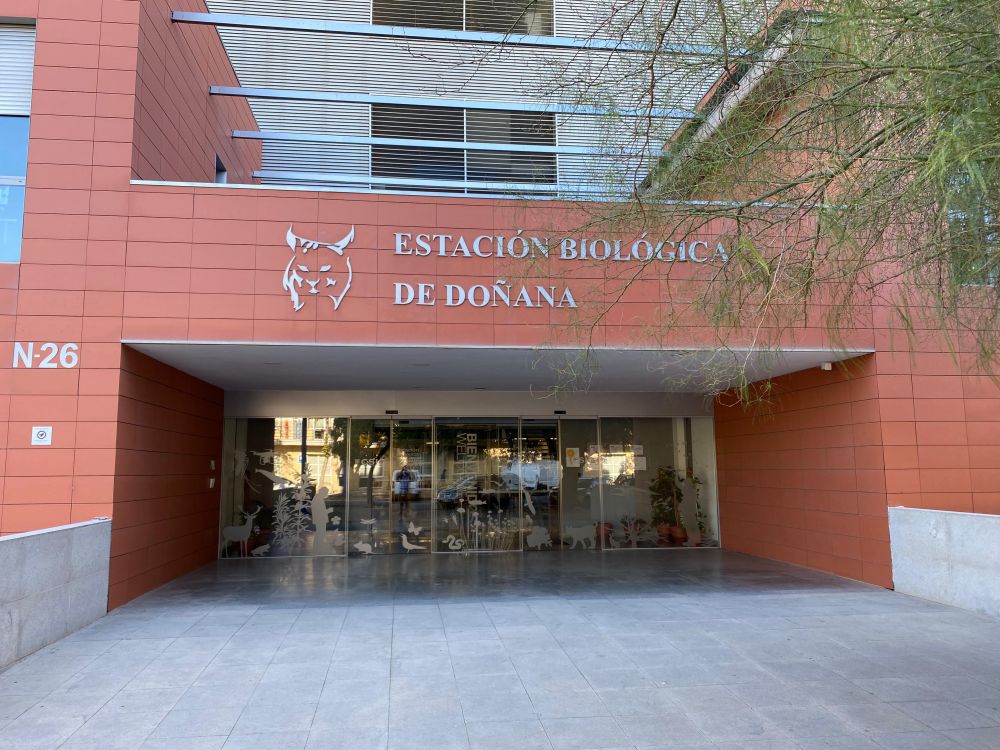
A new chapter begins! Starting this September, I’ll be working on bird macroevolution at @ebdonana.bsky.social . Excited for this new adventure and the amazing research ahead 🐦🐤🪶
28.08.2025 10:12 — 👍 11 🔁 0 💬 1 📌 0
Fernando Blanco CV (ENG).pdf
Here you can find a link to my full CV:
drive.google.com/file/d/1xH5P...
13.06.2025 08:24 — 👍 3 🔁 2 💬 0 📌 0
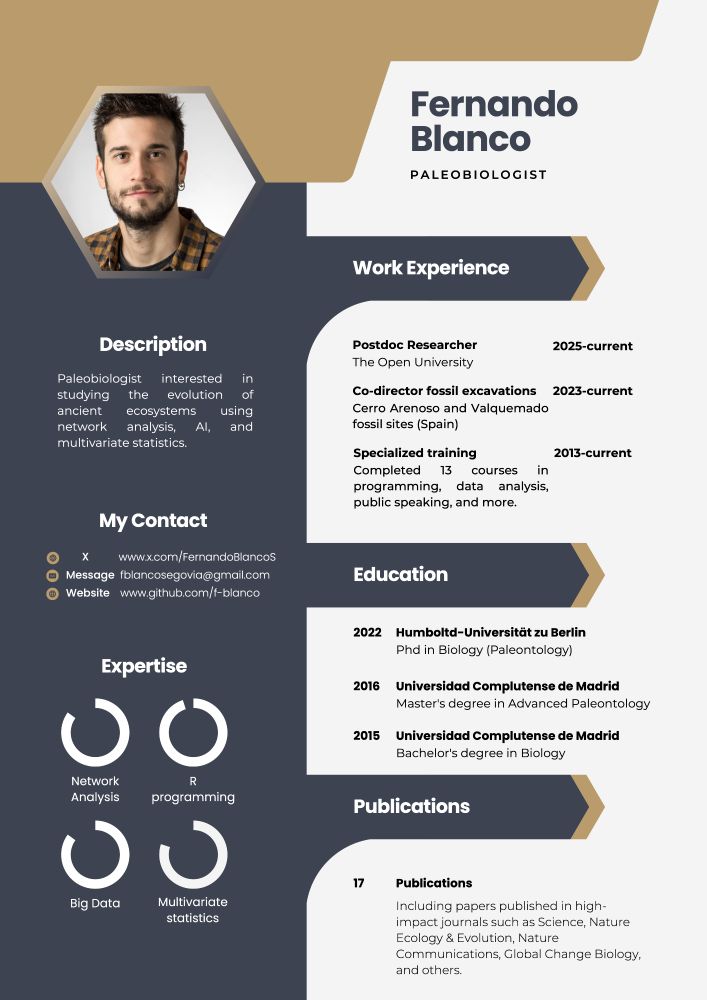
🚨 I'm looking for #Postdoc opportunities starting this September! 🧑🔬🔍
I'm a highly motivated researcher with experience in R, network analysis, and multivariate statistics. My focus is on the evolution of ecosystems and biodiversity over deep time.
13.06.2025 08:24 — 👍 20 🔁 20 💬 1 📌 0
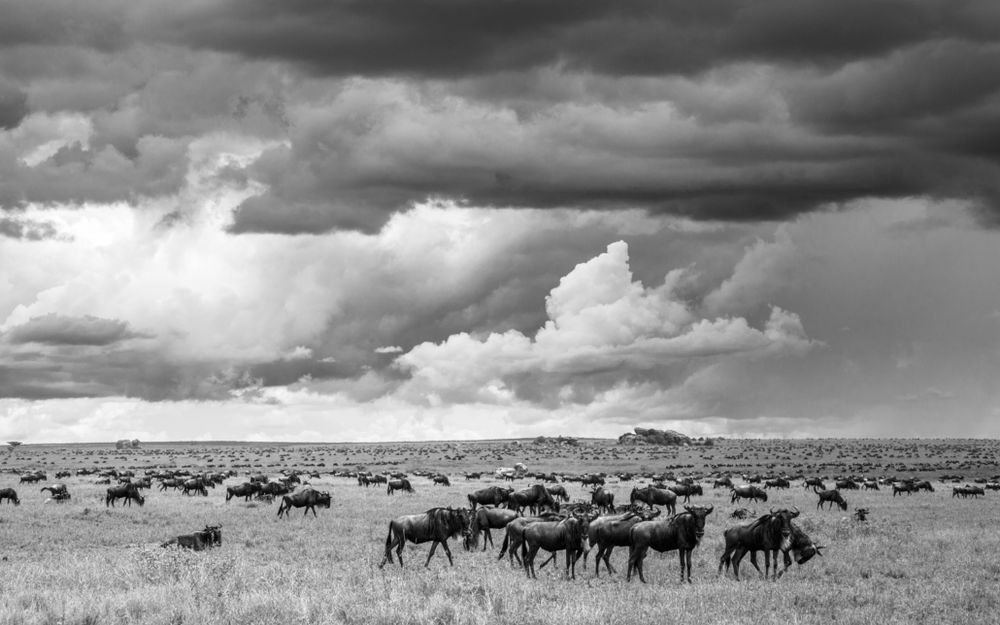
60 millones de años en movimiento: cómo los cambios ambientales transformaron a los mayores herbívoros del planeta—y cómo sus ecosistemas resistieron - sepaleontologia
Leer más
¡Nueva publicación de soci@s! 🗣️
Un nuevo estudio liderado por @fernandoblancos.bsky.social explora cómo los cambios ambientales impactaron en los grandes #mamíferos y sus ecosistemas durante el Neógeno 🐘🌍
👉 Léelo aquí:
https://sepaleontologia.es/?p=1423
#SEPsocios #Paleontología #CambioClimático
06.06.2025 09:32 — 👍 3 🔁 3 💬 0 📌 0

9/ This paper is the result of over 7 years of work—a true collective effort. Huge thanks to all my co-authors for making this possible! @ohsanisidro.bsky.social @singerstone.bsky.social @amniotalab.bsky.social et al.
📸 @singerstone.bsky.social
05.06.2025 09:15 — 👍 6 🔁 1 💬 0 📌 0
8/ But here’s the concern:
We are now in a period of accelerated functional loss—driven by habitat destruction, climate change, and overexploitation.
If this continues, we may be on the brink of a third global tipping point—one driven by humans.
05.06.2025 09:14 — 👍 4 🔁 1 💬 1 📌 0
7/ Despite major extinctions (including the Late Pleistocene megafaunal collapse), the basic functional scaffolding of herbivore faunas stayed stable for the last 4.5 million years.
Ecosystems “changed players,” but kept the same formation—until now.
05.06.2025 09:14 — 👍 3 🔁 0 💬 1 📌 0
6/ 🌀 Second tipping point (~10 Ma):
Driven by global aridification and the spread of C4 grasslands, this restructured herbivore faunas again. Forested browsers declined, grazers with tougher teeth rose. Functional diversity began a long decline that continues today.
05.06.2025 09:13 — 👍 3 🔁 0 💬 1 📌 0
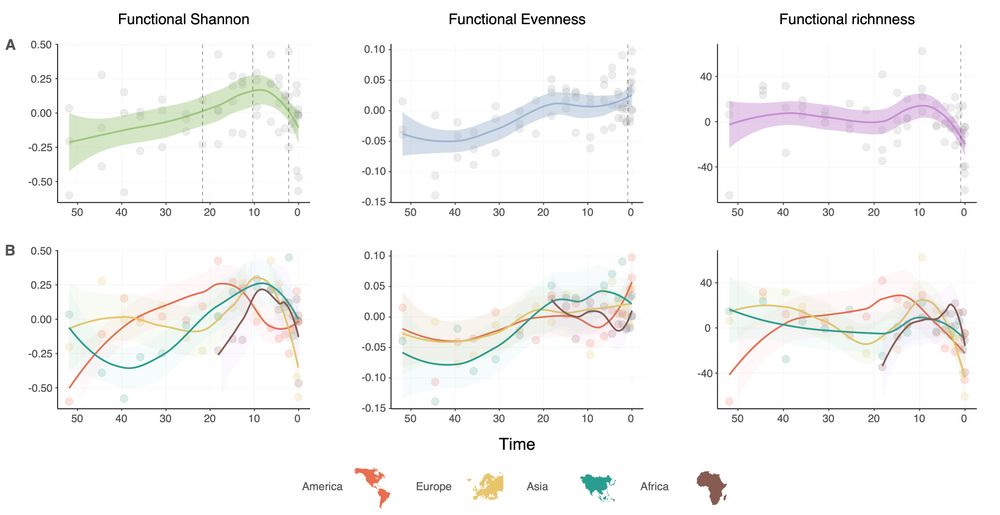
5/ This event also led to an acceleration in functional diversity increase. For the first time, all major herbivore orders—Proboscidea, Artiodactyla, and Perissodactyla—coexisted across continents, expanding ecological roles and reshaping ecosystems at a global scale.
05.06.2025 09:13 — 👍 4 🔁 0 💬 1 📌 0
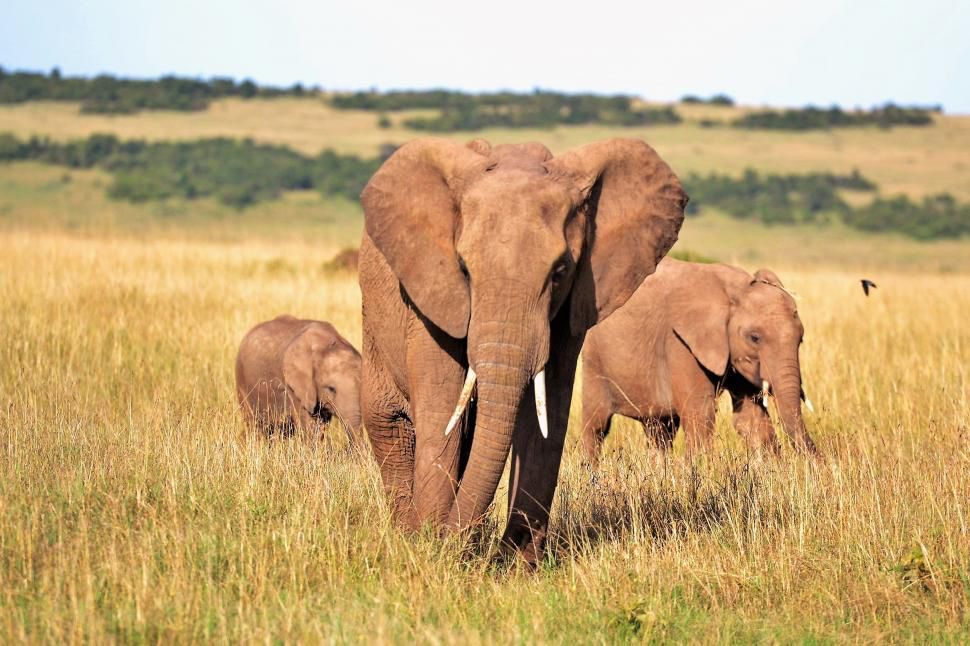
4/ 🌀First tipping point (~21 Ma):
Triggered by tectonics—Africa and Eurasia connected via the Gomphotherium land bridge.
This unleashed a wave of faunal migrations and global functional reorganization (Proboscideans out of Africa for the first time).
05.06.2025 09:13 — 👍 5 🔁 0 💬 1 📌 1
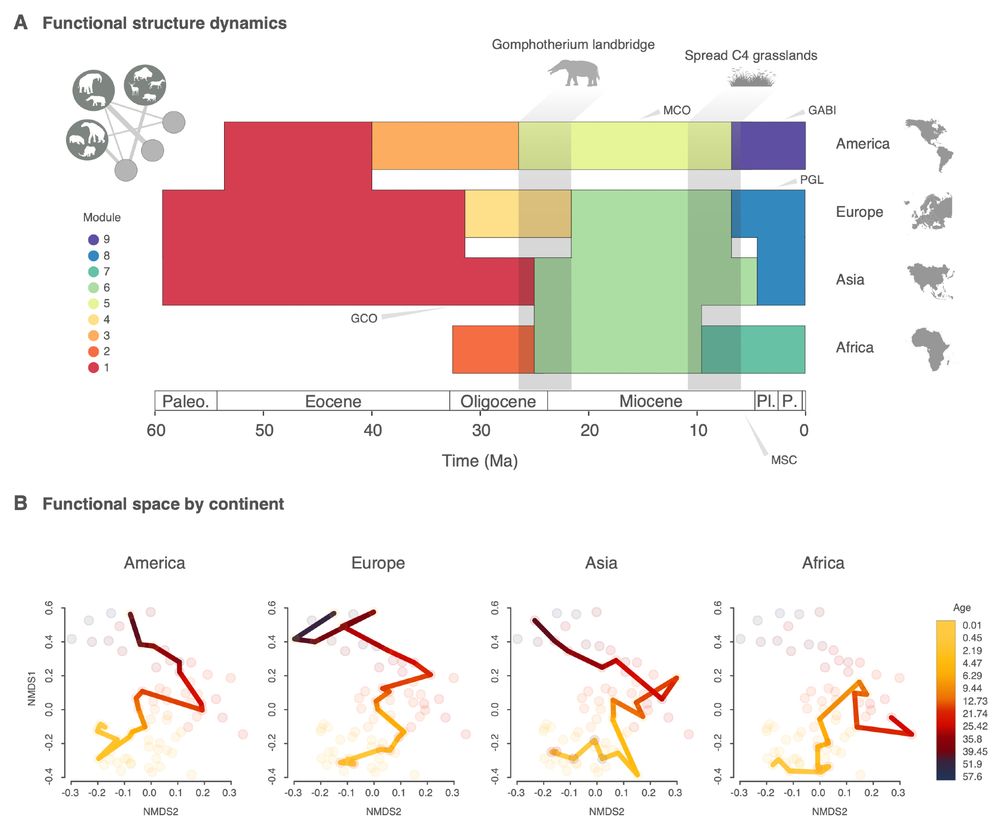
3/ Across time, we found long phases of functional stability, where ecosystems retained their structure despite species turnover.
But we also found two major, irreversible tipping points in global herbivore faunas—moments of drastic ecological reassembly.
05.06.2025 09:12 — 👍 6 🔁 0 💬 1 📌 0

2/ We used network analysis and trait data (like body size & tooth shape) from 3,000+ species to reconstruct the functional structure of global ungulate ecosystems over the past 60 million years.
Rather than focusing on taxonomy, we asked: What ecological roles they played?
05.06.2025 09:12 — 👍 4 🔁 0 💬 1 📌 0
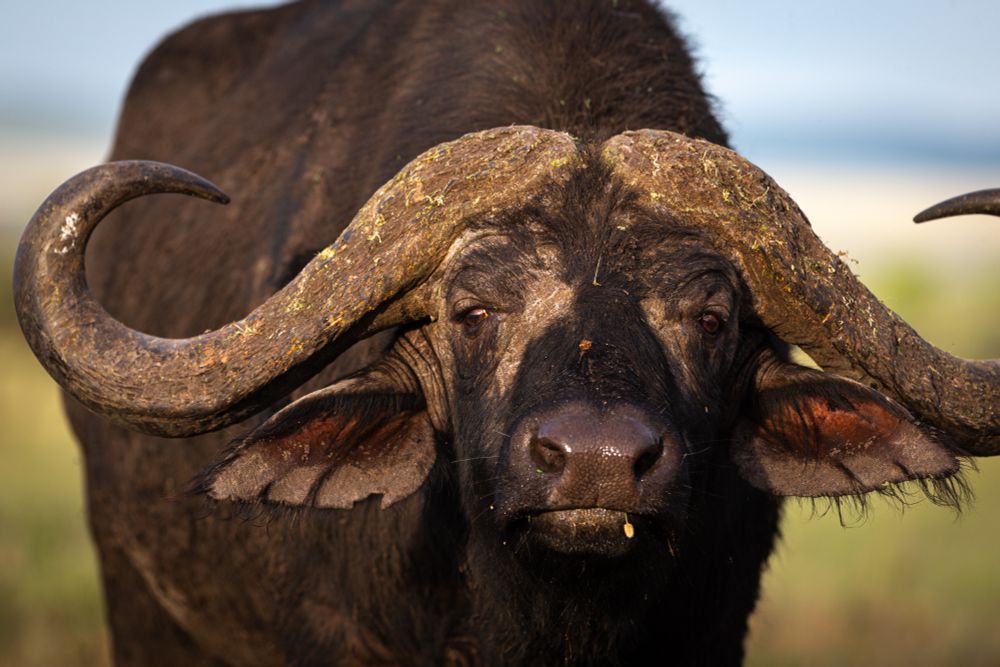
1/ Large herbivores (like ancient elephants, rhinos, deer) aren’t just big plant-eaters—they’re ecosystem engineers. They shape landscapes, disperse seeds, and influence soil and fire dynamics.
But how did they evolve as climates and continents shifted?
📸 @singerstone.bsky.social
05.06.2025 09:11 — 👍 12 🔁 2 💬 2 📌 0

A diverse group of 7 people pose in front of a large banner showing the work of the Institite for Mathematical and Statistical Innovation.

A large mirrored bean-shaped sculpture surrounded by people, green trees, and skyscrapers under a blue sky.
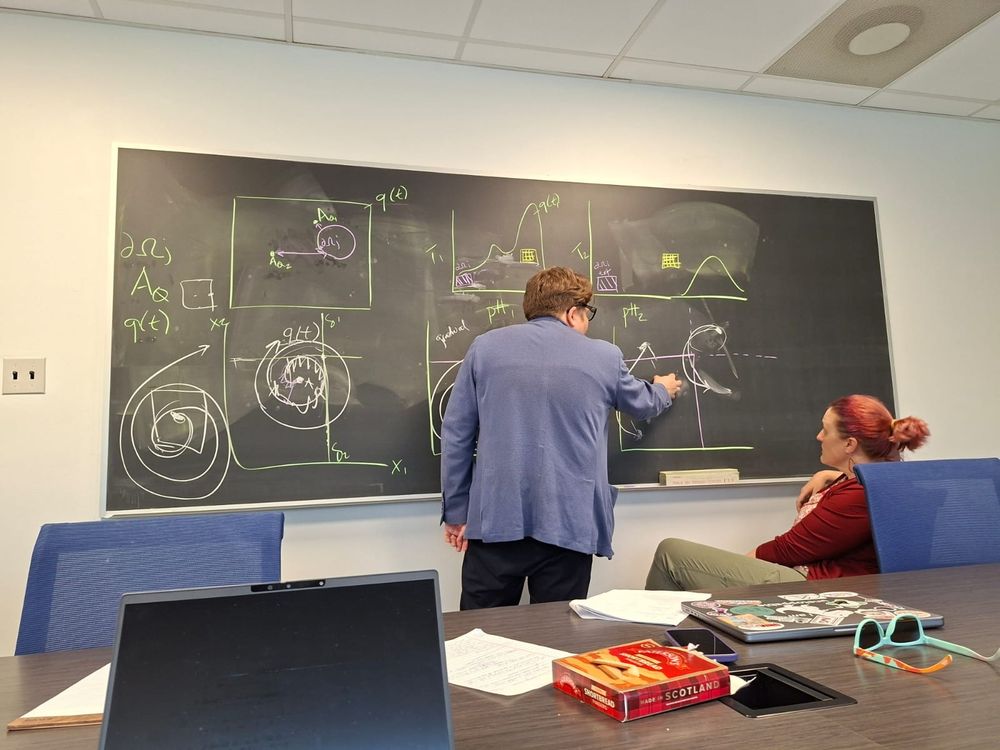
A man draws and explains a series of complicated models on a blackboard while a woman watches.
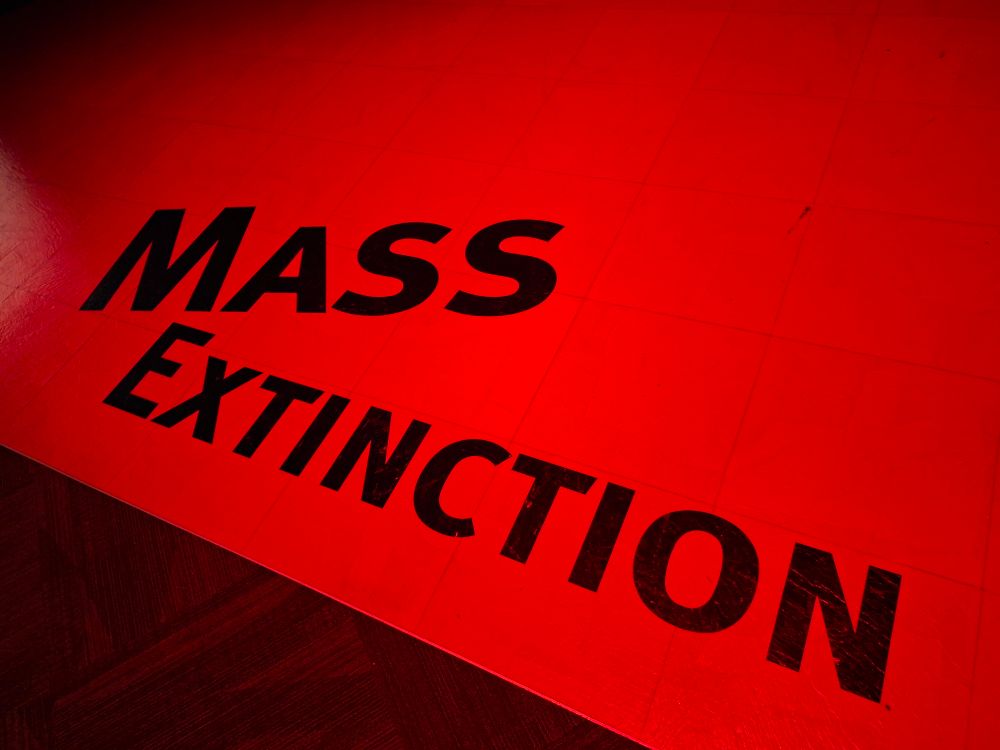
A sign projected on the floor saying 'mass extinction'.
Back from a fun 10 days @imsi.institute in Chicago 🇺🇲, working as part of an Interdisciplinary Research Cluster on 'Advances in Mathematical Modelling of mass extinction events'. Great collaborations and some thought-provoking work!
21.05.2025 09:28 — 👍 3 🔁 1 💬 0 📌 0

Recurrence plot
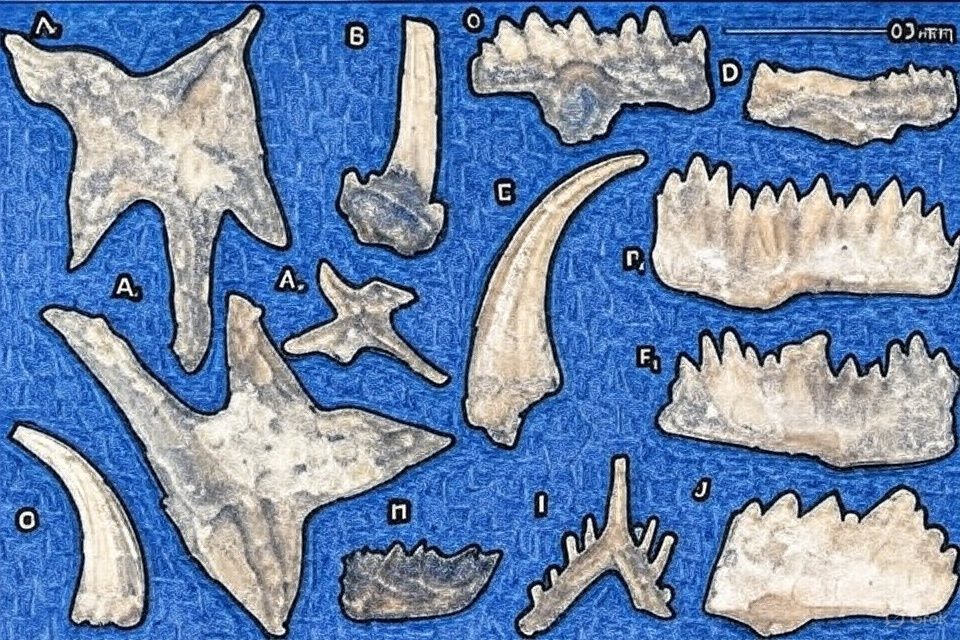
Stylized computer enhanced picture of conodonts
Call for a postdoc position at Vilnius University.
If you are interested in doing innovative macroevolutionary, macroecological, geobiological research in my group please write me: andrej.spiridonov@gf.vu.lt or PM.
Duration of the project 2 years, budget up to 130K euro.
1/2
#Paleobio ⚒️ #Geology
17.04.2025 13:31 — 👍 20 🔁 23 💬 2 📌 0
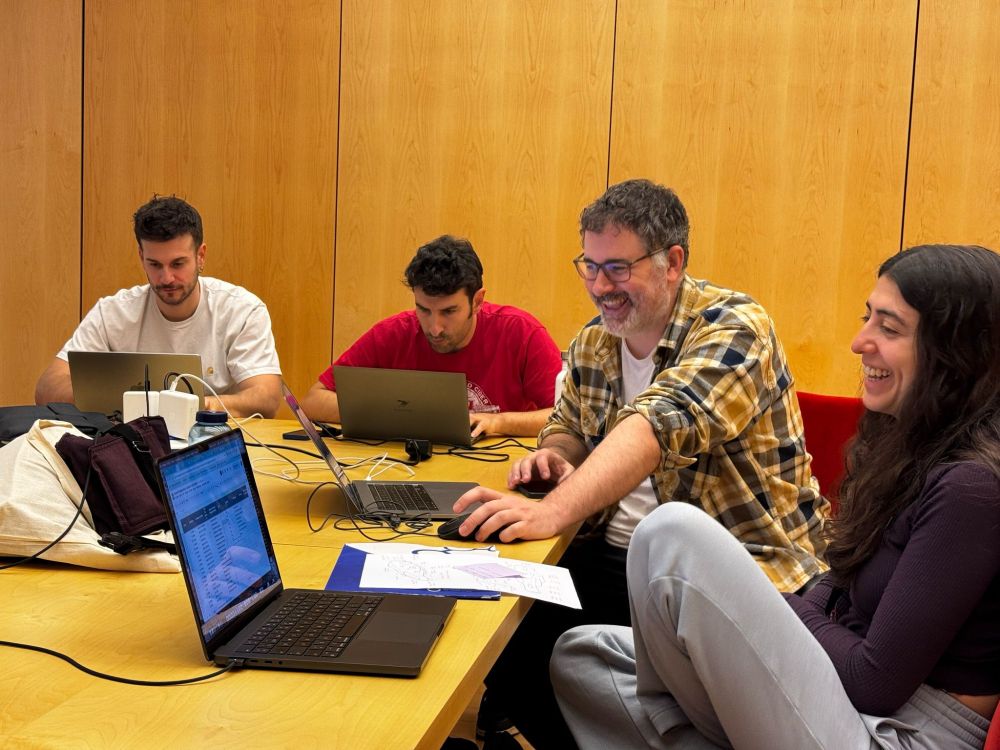
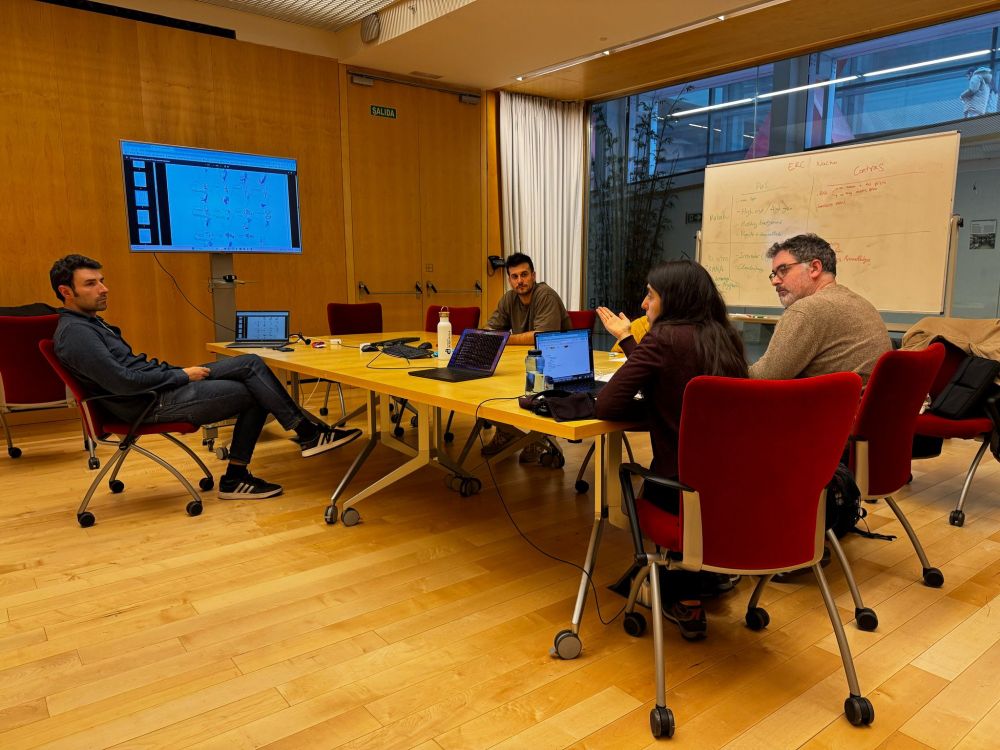
Burgos retreat at @cenieh.bsky.social with some Amniota Lab members! Ignacio Lazagabaster, @fernandoblancos.bsky.social , @paleoiris.bsky.social @singerstone.bsky.social & @ohsanisidro.bsky.social Fossils, science, food and good vibes
#paleobiology #AmniotaLab #MACPALS
04.04.2025 13:16 — 👍 6 🔁 5 💬 0 📌 0

macrovector / Freepik
Hoy se celebra el Día Mundial del Clima, un sistema complejo que incluye a la hidrosfera, la atmósfera, la geosfera y la biosfera.
26.03.2025 11:01 — 👍 3 🔁 3 💬 1 📌 0
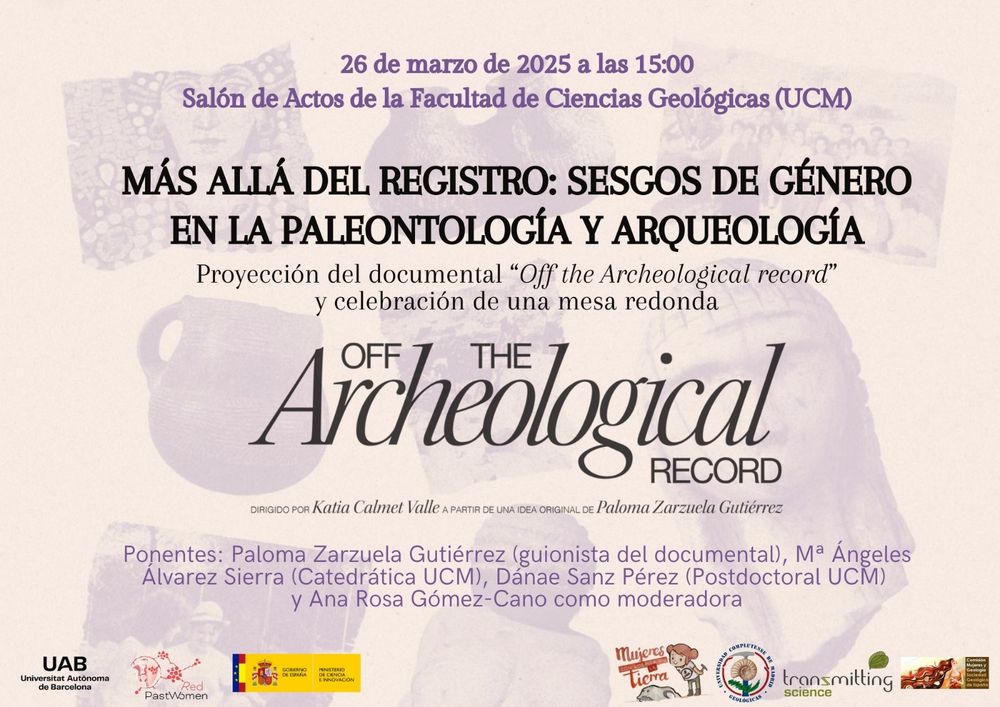
Hola!
El 26 de marzo a las 15:00 en la Facultad de Ciencias Geológicas (UCM) proyectamos Off the Archeological Record. Después, abrimos debate en una mesa redonda con la arqueóloga y guionista Paloma Zarzuela, y las paleontólogas Mª Ángeles Álvarez Sierra y Dánae Sanz
03.03.2025 08:00 — 👍 8 🔁 8 💬 0 📌 0
Brilliant paper! Functional networks are key to understanding past ecosystems. Exciting to see this research evolving—more work to come!
18.02.2025 14:38 — 👍 0 🔁 0 💬 0 📌 0

Frontiers | Selection, evolution and persistence of paleoecological systems
Late for Darwin's big day, but a new paper adding to his great theory, addressing the persistence of ecological systems on long timescales. "Selection, evolution and persistence of paleoecological systems" www.frontiersin.org/journals/ear... #evolution #paleontology #selection
13.02.2025 20:41 — 👍 6 🔁 5 💬 1 📌 0
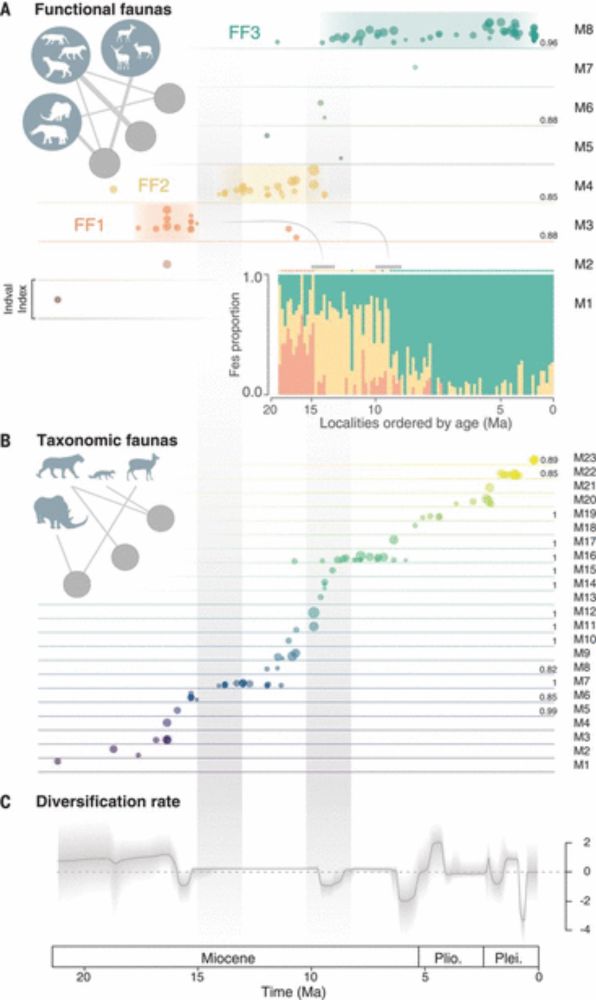
Punctuated ecological equilibrium in mammal communities over evolutionary time scales
Functional richness in past mammal communities increased ecosystem resilience.
In 2021, in a paper led by @fernandoblancos.bsky.social published in @science.org we analyzed the evolution of functional faunas in large mammals from the Iberian Peninsula over the last 20 million years. …
25.01.2025 15:51 — 👍 1 🔁 1 💬 1 📌 0
Hey everyone! Since I’m new to BlueSky, I thought I’d share a quick summary of some of the main projects I’ve worked on over the past three years. Buckle up for some paleontology! 🦴⚒️💻
25.01.2025 15:51 — 👍 11 🔁 5 💬 1 📌 0
Don't miss the chance to attend this incredible meeting in Zurich this July! Mark your calendar and join us for insightful discussions and networking opportunities 👇👇
20.01.2025 17:07 — 👍 2 🔁 0 💬 0 📌 0
Graduado en Biología (Universidad de Sevilla)
Postgrado en Biodiversidad y Biología de la Conservación (UPO - EBD, CSIC) en curso
Postdoc @ebdonana.bsky.social
Exploring ecological interactions through the lens of Complex Systems 🌱
violetavivi.github.io
We are a Spanish public research institute dedicated to the study of #Ecology, #Evolution and the #Conservation of #Biodiversity. Spanish National Research Council (CSIC).
https://beacons.ai/ebdonana
The Royal Society is a Fellowship of many of the world's most eminent scientists and is the oldest scientific academy in continuous existence.
Fourth year PhD student at the University of Cambridge 🎓 MSc Palaeobiology & BSc Geology graduate from the University of Bristol. Views my own. LGBTQ+ 🏳️🌈 They/He
https://sites.google.com/view/philipvixseboxse
Undergrad student at the University of São Paulo (IB-USP).
Paleontologist in training www.macropaleolab.com
She/her | 🇧🇷🦥.
#ComplexSystems scientist. Institute of Evolutionary Biology @csic.es, Barcelona| DySOC-UTennessee, Knoxville | ECLT, Venice. Girl dad. He/him.
Lab: svalver.github.io
#EvoBio #CultEvo #ExtendedBiology #hypergraphs
Palaeontologist specialising in the behaviour of dinosaurs and biology of pterosaurs. Reader in Zoology @QMUL. Author of several books, podcaster, general sci-commer. Thoughts my own. He / him. davehone.co.uk
We are a research institute focused on global change 🌎.
Scientific excellence 🔬, transference 🤝🏻, training 🎓 and outreach 📣 are our driving forces.
Our website: https://iicg-urjc.es/
Earth System Modeller, #climate and #sustainability researcher,
Director for Sustainability Research,
Open Societal Challenges Programme, The Open University, UK
Palaeontologist working on trilobites and other Palaeozoic arthropods.
Postdoctoral Researcher at the Yunnan Key Laboratory for Palaeobiology 🇨🇳
Huelva, Andalusia 🇪🇸
Ecologist | Head of a research think tank/science funder -> iDiv's Synthesis Centre sDiv idiv.de/sdiv | Global Alien Plants glonaf.org | SciCom | TEDx tiny.cc/aliens | Indierock drummer for http://wal.band - pls check | avid hiker & nature lover
Evolutionary palaeobiologist, admirer of nature, (pent)athlete
#RuminantsRule
Nature Communications is an open access journal publishing high-quality research in all areas of the biological, physical, chemical, clinical, social, and Earth sciences.
www.nature.com/ncomms/
Geologist, specialized in site formation processes and palaeoenvironment. Post-doc fellow at Complutense University Madrid.
Palaebiologist | Paläobiologin |
Research | Forschung @kieluni 🇩🇪🇪🇺
#Palaeontology #Zoology #Evolution #Anatomy #Vertebrae #Archosaurs 🐊🐦🐀 @BoehmerGroup
Journalist learning and writing about grasslands. Also a dad / husband in new mexico.
We are the British Ecological Society Macroecology & Macroevolution Special Interest Group. We run the annual #BESMacro conference and will gladly repost papers and opportunities of interest to our members!
🇲🇽 - macroecology, evolution, conservation, spatial. #rstats, data. mammalogist. tidyverse and 🔨 instructor














